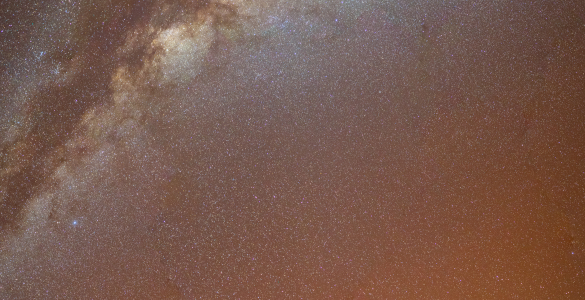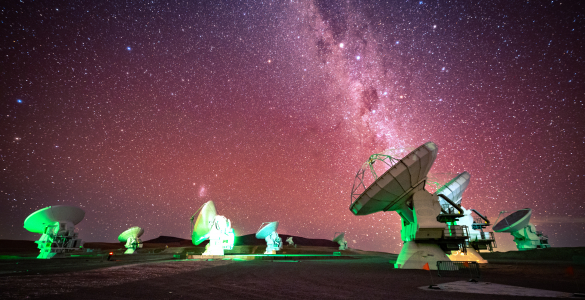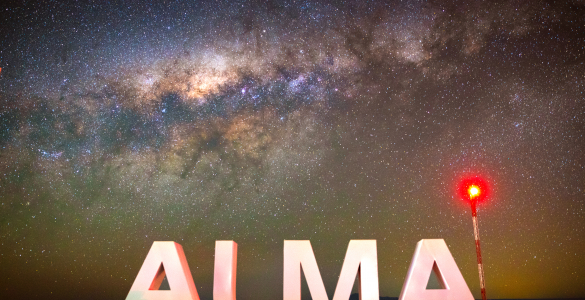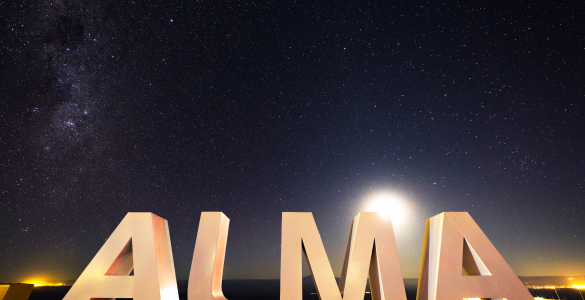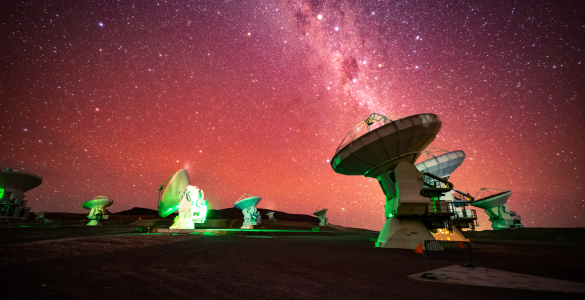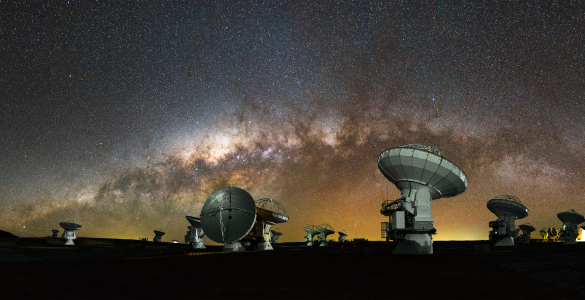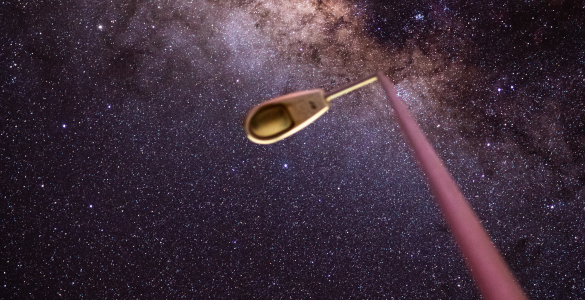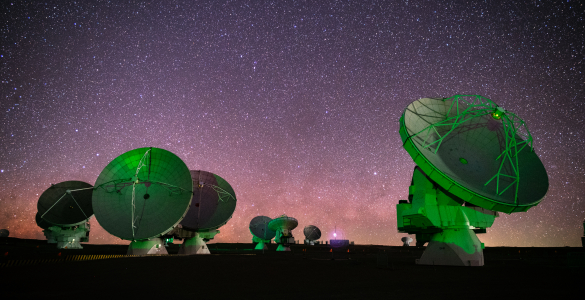The First Short GRB Millimeter Afterglow: The Wide-Angled Jet of Gamma Ray Burst 211106A
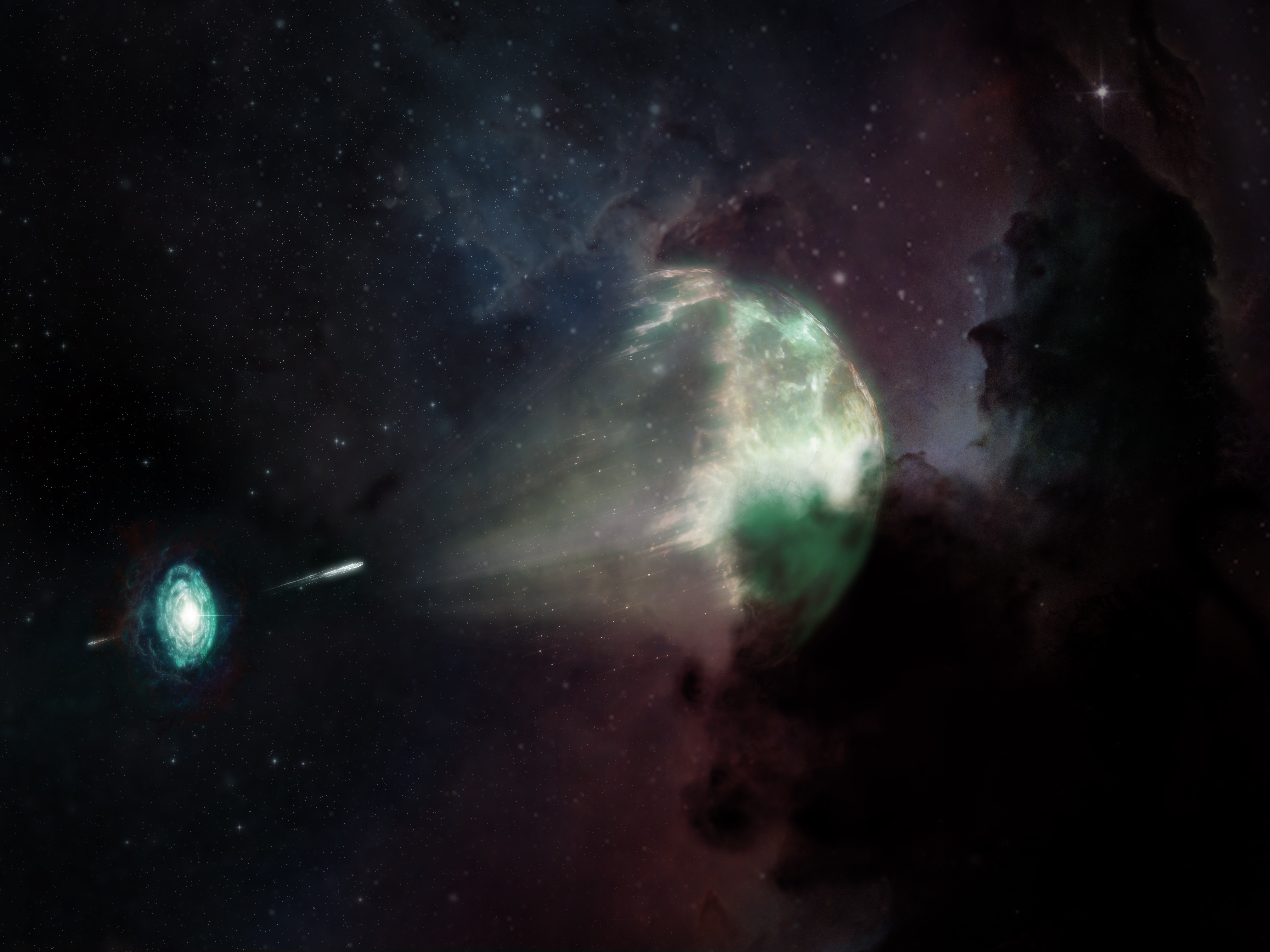
In a first for radio astronomy, scientists have detected millimeter-wavelength light from a short-duration gamma-ray burst. This artist’s conception shows the merger between a neutron star and another star (seen as a disk, lower left) which caused an explosion resulting in the short-duration gamma-ray burst, GRB 211106A (white jet, middle), and left behind what scientists now know to be one of the most luminous afterglows on record (semi-spherical shock wave mid-right). While dust in the host galaxy obscured most of the visible light (shown as colors), millimeter light from the event (depicted in green) was able to escape and reach the Atacama Large Millimeter/submillimeter Array (ALMA), giving scientists an unprecedented view of this cosmic explosion. From the study, the team confirmed that GRB 211106A is one of the most energetic short-duration GRBs ever observed.







